Preparing For Emergencies - A Safety Guide
Emergencies can strike at any moment, often without warning, turning our lives upside down in the blink of an eye. Whether it's a natural disaster like a hurricane or an unforeseen medical crisis, being prepared is the key to ensuring safety and effective response. This guide provides essential information on how to prepare for emergencies, ensuring safety and effective response in times of crisis. By understanding what to expect and having a plan in place, you can transform a potentially chaotic situation into a manageable one. So, let’s dive into the essentials of emergency preparedness!
Recognizing the various types of emergencies is crucial for effective preparation and response strategies tailored to specific situations. Emergencies can broadly be categorized into three main types: natural disasters, medical emergencies, and man-made crises. Natural disasters include events like earthquakes, floods, and wildfires, which can cause widespread destruction and displacement. Medical emergencies might involve sudden health issues like heart attacks or severe injuries, requiring immediate attention. Man-made crises, such as terrorist attacks or industrial accidents, can create panic and chaos, necessitating a swift response. Understanding these categories helps you anticipate the types of emergencies you might face and develop appropriate strategies to handle them.
An emergency plan is vital for ensuring safety during crises. It acts as your roadmap when everything else seems to be falling apart. Start by identifying communication strategies that ensure everyone in your household knows how to reach each other during an emergency. Designate evacuation routes from your home and community, and establish meeting places where family members can reunite if separated. For example, if a disaster strikes while you’re at work and your kids are at school, having a predetermined location can reduce anxiety and confusion. Remember, an effective plan is one that everyone understands and can execute under pressure.
An emergency kit is essential for survival during unexpected situations. Think of it as your lifeline when the going gets tough. Ideally, your kit should contain enough supplies to last at least 72 hours without assistance. Here are some key items to include:
- Water: At least one gallon per person per day.
- Non-perishable food: Ready-to-eat meals, energy bars, etc.
- First aid supplies: Bandages, antiseptic wipes, and pain relievers.
- Flashlight and batteries: Essential for power outages.
- Multi-tool: Handy for various situations.
Additionally, consider including personal items like medications, important documents, and pet supplies if applicable. Regularly check and update your kit to ensure everything is in working order and not expired. It’s better to be over-prepared than underprepared!
Access to reliable information is critical during emergencies. When chaos reigns, knowing where to find accurate updates can make all the difference. Utilize a mix of sources, including local news channels, social media platforms, and emergency alert systems. Many communities have text alert systems that provide real-time updates on emergencies in your area. Staying informed allows you to make educated decisions about your safety and the safety of your loved ones.
Understanding basic first aid and having medical supplies on hand can save lives. Knowing how to perform CPR or treat a burn can turn you into a hero in a crisis. Equip your emergency kit with essential first aid items such as:
- Adhesive bandages
- Gauze pads
- Antibiotic ointment
- Scissors and tweezers
Consider taking a first aid course to enhance your skills. Knowledge is power, and in emergencies, it can be the difference between life and death.
Certain populations, such as the elderly or those with disabilities, require special attention in emergencies. They may need additional assistance or resources to ensure their safety and accessibility during crises. It's essential to include them in your emergency planning process. For instance, if you have an elderly neighbor, check in with them regularly and ensure they have the necessary supplies and knowledge to respond effectively. Building a community of preparedness can enhance everyone's safety.
Regularly practicing your emergency plan can enhance preparedness and reduce panic during actual emergencies. Conduct drills that simulate various scenarios, whether it's a fire drill or a severe weather warning. Involve all family members, including kids, to ensure everyone knows their role. The more familiar you are with your plan, the more confident you will feel when it matters most.
Emergency preparedness is an ongoing process. It’s not a “one-and-done” deal. Regularly reviewing and updating your emergency plans, kits, and knowledge is crucial to ensure readiness for any situation. Set a recurring date on your calendar to check your supplies, refresh your knowledge, and practice your plan. Life changes, and so do emergencies; staying adaptable is key!
Q: How often should I update my emergency kit?
A: It’s advisable to review and update your emergency kit at least once a year or whenever there are changes in your household, such as a new baby or a pet.
Q: What should I do if I have to evacuate?
A: Follow your emergency plan, take your emergency kit, and stay informed through local news and alerts. Always let someone know your evacuation route and destination.
Q: How can I help my elderly neighbors during an emergency?
A: Check in with them regularly, assist with their emergency plans, and ensure they have the supplies they need. Building a community of support can make a significant difference.
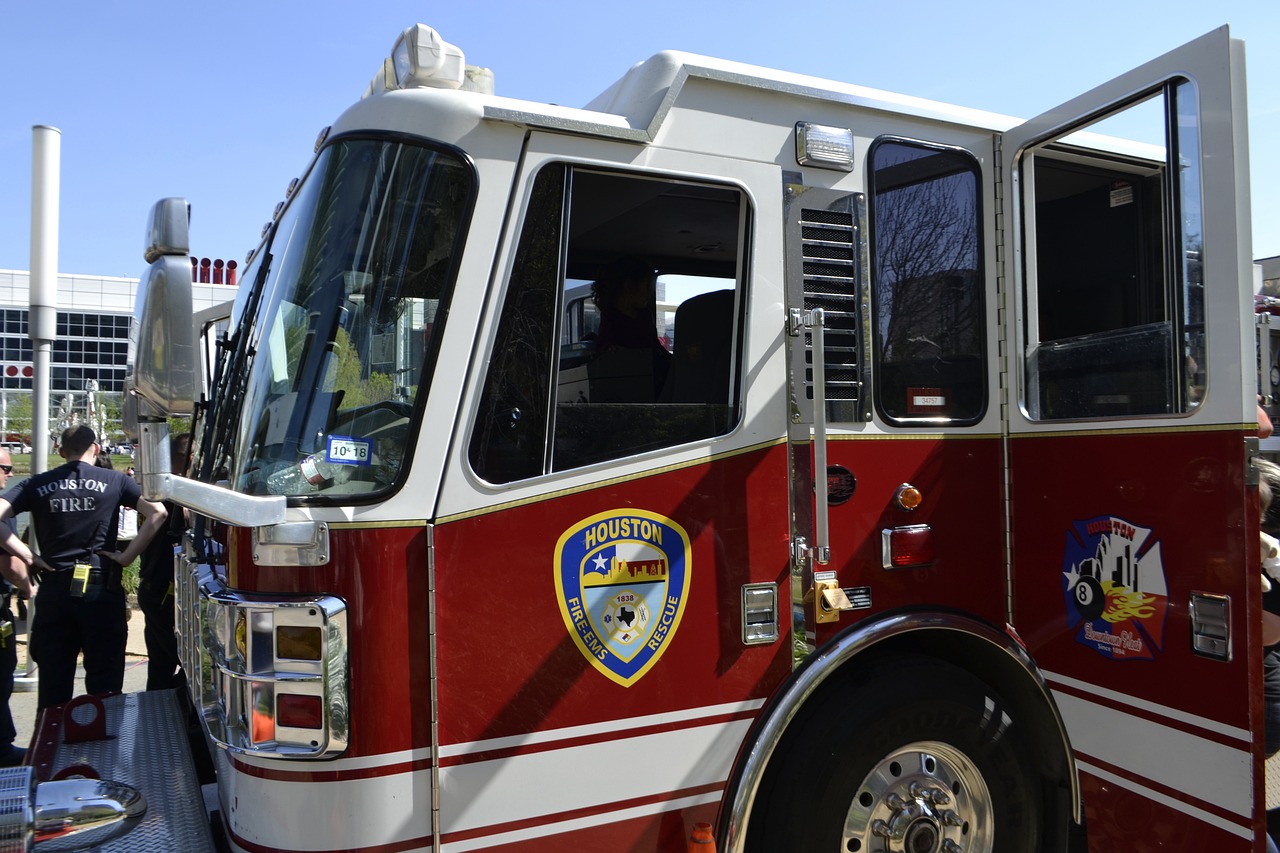
Understanding Different Types of Emergencies
When it comes to emergencies, understanding the different types can be your first line of defense. Emergencies can arise from a variety of sources, and each type requires a unique approach to preparation and response. Think of it like a toolbox; having the right tool for the job can make all the difference. In general, emergencies can be categorized into three main types: natural disasters, medical emergencies, and man-made crises.
Natural disasters are perhaps the most unpredictable and can include events such as hurricanes, earthquakes, floods, and wildfires. Each of these events carries its own set of risks and challenges. For instance, hurricanes can lead to severe flooding and wind damage, while earthquakes can strike without warning, causing buildings to collapse and infrastructure to fail. It's essential to understand the specific risks associated with your geographical area. For example, if you live in a coastal region, having a plan for evacuation during hurricane season is crucial.
On the other hand, medical emergencies can happen at any time and often require immediate attention. These can range from a sudden heart attack to a severe allergic reaction. Recognizing the signs of a medical emergency can be lifesaving. For instance, knowing what symptoms to look for in a heart attack, such as chest pain or shortness of breath, can prompt you to seek help quickly. In these situations, having basic first aid knowledge and a well-stocked emergency kit can provide immediate assistance until professional help arrives.
Then we have man-made crises, which can include anything from industrial accidents to acts of terrorism. These situations can often be more complex and unpredictable. For example, a chemical spill in a nearby factory may require immediate evacuation of the surrounding area, while an active shooter situation necessitates a different set of responses. Understanding the potential risks in your community and having a plan in place can significantly enhance your safety.
To further illustrate these types of emergencies, here's a quick overview:
| Type of Emergency | Examples | Key Considerations |
|---|---|---|
| Natural Disasters | Hurricanes, Earthquakes, Floods, Wildfires | Know local evacuation routes, have a disaster kit ready |
| Medical Emergencies | Heart Attacks, Allergic Reactions, Injuries | Basic first aid knowledge, keep emergency contacts handy |
| Man-Made Crises | Industrial Accidents, Terrorism, Civil Unrest | Stay informed about local threats, have a communication plan |
Being aware of these different types of emergencies is the first step in crafting a comprehensive emergency preparedness plan. By understanding the specific risks associated with each type, you can tailor your strategies to effectively manage any situation that may arise. It's not just about having supplies on hand; it's about being mentally prepared and knowing how to react when the unexpected happens.
- What should I do first during a natural disaster? Prioritize your safety by following local evacuation orders and seeking shelter if necessary.
- How can I learn basic first aid? Consider taking a first aid and CPR course offered by organizations like the Red Cross.
- What should I include in my emergency kit? Essential items include water, non-perishable food, a flashlight, first aid supplies, and important documents.

Creating an Emergency Plan
When it comes to emergencies, having a well-thought-out plan can be the difference between chaos and calm. Imagine being in the midst of a crisis, your heart racing, and uncertainty looming over you. Now, picture having a clear roadmap to follow—sounds reassuring, right? That's the power of an emergency plan. It's not just a piece of paper; it's your safety net, guiding you and your loved ones through turbulent times.
To kick off your emergency plan, start by identifying the types of emergencies that are most likely to affect your area. Are you in a flood zone? Or perhaps prone to earthquakes? Knowing what you're up against allows you to tailor your plan effectively. Once you have this information, you can move on to establishing communication strategies. This involves deciding how you will stay in touch with family members during an emergency. Will you use text messages, social media, or a designated family radio? Ensure everyone is on the same page and knows who to contact if separated.
Next, consider the importance of evacuation routes. It’s crucial to know the safest paths to take if you need to leave your home quickly. Create a map that highlights these routes and make sure everyone in your family is familiar with it. Don't forget to include alternative routes in case your primary ones are blocked. In addition to routes, designate a meeting place where your family can regroup after an emergency. This could be a neighbor's house, a local park, or any safe location that everyone can remember.
Another key element of your emergency plan is ensuring accessibility for all family members, especially children, elderly relatives, or those with disabilities. Discuss your plan with them and consider their needs when creating it. For instance, if you have a family member who uses a wheelchair, you’ll want to ensure that your evacuation routes are accessible.
Lastly, it's essential to maintain flexibility in your plan. Emergencies can be unpredictable, and having the ability to adapt is vital. Regularly review and practice your plan with your family, so everyone knows what to do when the time comes. This not only builds confidence but also reinforces the importance of being prepared.
In summary, creating an emergency plan involves understanding potential risks, establishing communication strategies, planning evacuation routes, and ensuring accessibility for all family members. By taking these steps, you’re not just preparing for the worst—you’re empowering yourself and your loved ones to face any challenge with confidence.
- How often should I review my emergency plan? It's advisable to review your plan at least once a year or after any significant life changes, such as moving or a family member's arrival.
- What should I include in my emergency communication plan? Include emergency contacts, communication methods, and meeting places for your family to regroup.
- How can I ensure my plan is accessible for everyone? Discuss the plan with all family members, and consider their specific needs when creating your evacuation routes and meeting places.
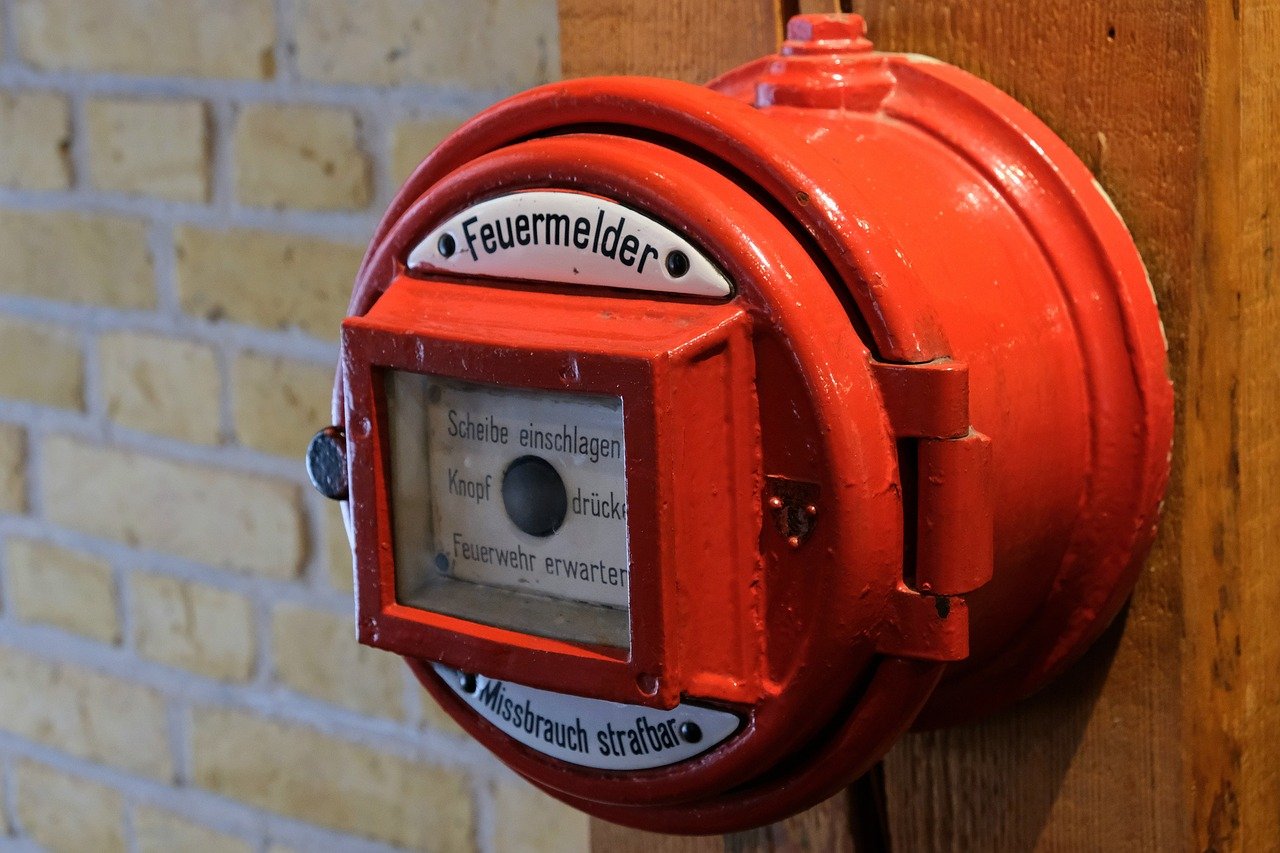
Building an Emergency Kit
When it comes to emergencies, having a well-stocked emergency kit can be your lifeline. Think of it as your personal safety toolbox, ready to spring into action when the unexpected strikes. Whether it's a natural disaster, a power outage, or a medical emergency, being prepared can mean the difference between chaos and calm. So, what exactly should you include in your emergency kit? Let's break it down!
First and foremost, you want to ensure that your kit can sustain you and your family for at least 72 hours. This means packing enough food, water, and supplies to keep everyone safe and comfortable. Start with the basics:
- Water: Aim for at least one gallon per person per day.
- Non-perishable food: Think canned goods, granola bars, and dried fruits.
- Manual can opener: You don’t want to be stuck without a way to open those cans!
Besides food and water, don’t forget about essential supplies. Here’s a quick rundown of items that can prove invaluable:
| Item | Purpose |
|---|---|
| Flashlight | To navigate in the dark and signal for help. |
| Batteries | To keep your flashlight and other devices powered. |
| First Aid Kit | To treat minor injuries and prevent infections. |
| Whistle | To signal for help if you’re trapped. |
| Multi-tool or Swiss Army knife | For various tasks like cutting, screwing, or opening. |
Moreover, personal items such as medications, glasses, and important documents should be included in your kit. It’s like packing your essentials for a trip, but this time, you’re preparing for the unexpected. Keep these items in a waterproof container to protect them from damage.
Another critical aspect of your emergency kit is communication. In times of crisis, staying connected can be challenging, so consider adding a portable charger for your phone, a battery-operated radio, and even a list of emergency contacts. You never know when you might need to reach out for help, and having these tools at your disposal can make all the difference.
Lastly, remember to customize your emergency kit based on your family’s unique needs. If you have pets, include food and supplies for them too. If someone in your household has special medical requirements, make sure to pack extra supplies or medications. Your emergency kit should be a reflection of your family’s lifestyle and needs.
In summary, building an emergency kit is not just about throwing a few items together; it’s about creating a comprehensive resource that prepares you for the worst. Take the time to gather the necessary supplies, review them regularly, and ensure that everyone in your household knows where the kit is located. After all, in the face of an emergency, being prepared is your best defense!
Q: How often should I check my emergency kit?
A: It's a good idea to check your emergency kit at least twice a year. This ensures that food, water, and medications are still within their expiration dates, and that you have everything you need.
Q: Can I use my emergency kit for everyday situations?
A: Absolutely! Your emergency kit can be useful for various everyday situations like power outages, camping trips, or even road trips. Just remember to replenish any items you use.
Q: What if I have specific dietary restrictions?
A: Tailor your emergency kit to meet your dietary needs. Include non-perishable food items that you can eat and that won’t spoil. Always check expiration dates.
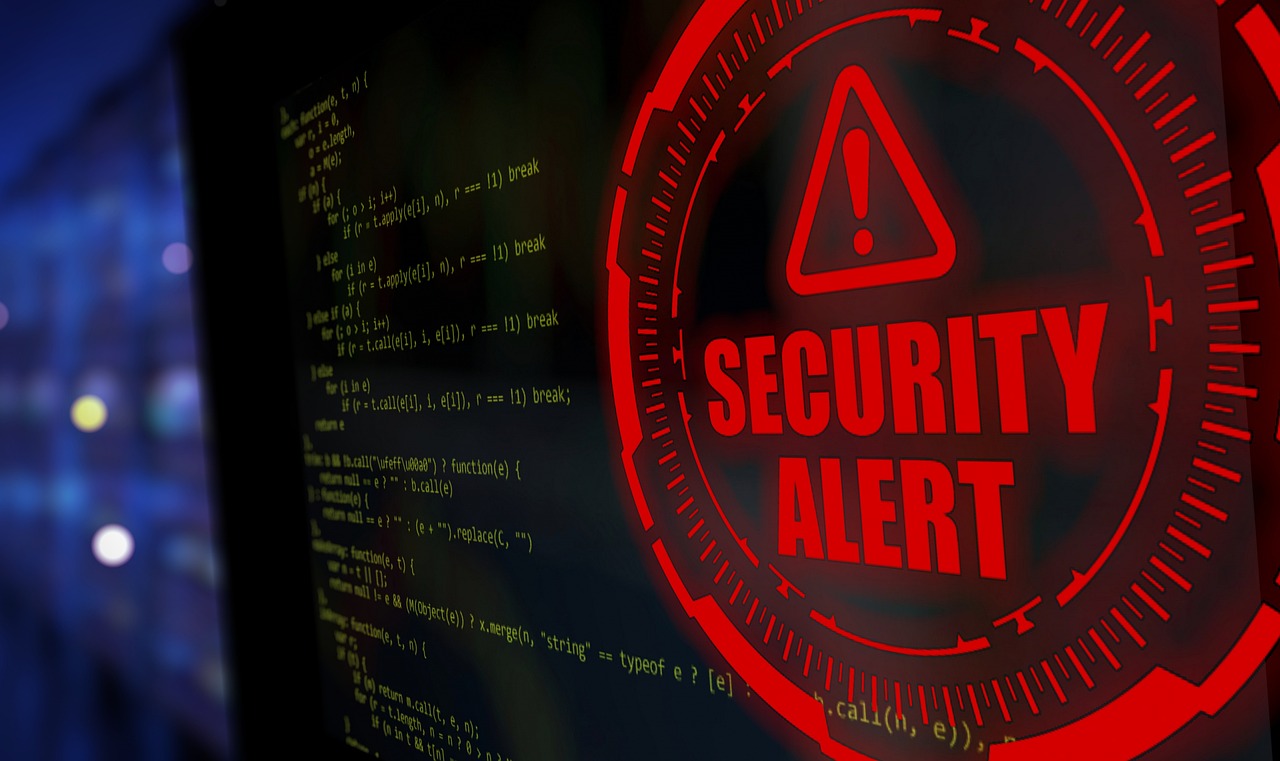
Staying Informed During Emergencies
When an emergency strikes, the last thing you want is to be left in the dark. Staying informed is your lifeline, and it can make all the difference between chaos and calm. Imagine being in the middle of a storm, and all you have is a radio crackling with static. Frustrating, right? That's why having reliable sources of information is crucial. During emergencies, the landscape of communication can change rapidly, and knowing where to get your updates can save lives.
First and foremost, local news outlets are your best friends. They provide real-time updates on the situation in your area, including weather alerts, evacuation orders, and safety tips. Make sure to have a battery-powered radio or a portable charger for your devices. You never know when the power might go out, and you don’t want to be left without a way to access critical information.
In addition to traditional media, social media platforms can be a double-edged sword. On one hand, they can spread information quickly; on the other hand, misinformation can spread just as fast. Follow official accounts, such as your local government, emergency services, and trusted news organizations, to ensure you're getting accurate updates. Think of it as filtering through the noise to find the signal that matters most.
Another vital resource is emergency alert systems. Many places have systems that send out alerts via text messages or emails. These alerts can inform you about severe weather warnings, road closures, and other urgent situations. Signing up for these alerts is like having a personal assistant who keeps you in the loop, ensuring you’re never caught off guard.
Here’s a quick table summarizing some reliable sources of information during emergencies:
| Source | Type of Information | Access Method |
|---|---|---|
| Local News Stations | Real-time updates, weather alerts | TV, Radio, Online |
| Social Media | Community updates, official announcements | Facebook, Twitter, Instagram |
| Emergency Alert Systems | Severe weather alerts, safety information | Text, Email |
| Emergency Services | Evacuation routes, safety tips | Website, Phone |
Lastly, don’t underestimate the power of community. Neighbors can be a great resource for sharing information and lending a helping hand. During emergencies, people often come together, sharing what they know and looking out for one another. So, don’t hesitate to reach out to those around you. After all, we’re all in this together, and sometimes the best information comes from a friendly chat over the fence.
In conclusion, staying informed during emergencies is not just about having the right tools; it’s about knowing how to use them effectively. By leveraging local news, social media, emergency alerts, and community connections, you can ensure that you and your loved ones are well-prepared to face whatever challenges come your way.
- What should I do if I can't access the internet during an emergency? - Rely on battery-powered radios and emergency alert systems for updates.
- How can I verify information I find on social media? - Cross-check with official accounts and local news sources.
- Are there apps for emergency alerts? - Yes, many local governments have apps that provide real-time updates and alerts.

First Aid and Medical Preparedness
When it comes to emergencies, being prepared can make a significant difference between chaos and control. are not just buzzwords; they are essential skills that can save lives. Imagine being in a situation where someone has suffered a serious injury, and you are the only one around. Would you know what to do? This is where having a solid understanding of first aid becomes invaluable. It's not just about having a first aid kit; it's about knowing how to use it effectively and being ready to act when every second counts.
First aid is a set of skills that anyone can learn, and it often involves simple techniques that can stabilize a person's condition until professional help arrives. Basic first aid knowledge includes how to perform CPR, how to treat wounds, and how to recognize signs of shock or other critical conditions. The American Red Cross and other organizations offer courses that teach these skills, making it easier than ever to get trained. Remember, knowing how to respond in an emergency can turn you into a hero in a moment of crisis.
In addition to knowledge, having a well-stocked emergency kit is crucial. Your kit should contain essential items that can address common injuries and medical situations. Here’s a quick rundown of what you might consider including:
- Adhesive bandages in various sizes
- Gauze pads and adhesive tape
- Antiseptic wipes and ointment
- Scissors and tweezers
- Instant cold packs for sprains or strains
- Pain relievers, such as ibuprofen or acetaminophen
- A digital thermometer
- Any personal medications that you or family members may need
Moreover, it’s a good idea to keep a list of emergency contacts and medical information in your kit. This list should include allergies, chronic conditions, and any medications that family members take. In a high-stress situation, having this information readily available can be a lifesaver.
Another important aspect of medical preparedness is understanding how to respond to specific scenarios. For instance, knowing how to handle a burn, a fracture, or a choking incident can greatly impact the outcome. Each situation has its own set of protocols that you can learn through training. For example, if someone is choking, the Heimlich maneuver could be the difference between life and death. Practice these techniques regularly, so they become second nature.
Finally, it's vital to stay updated on your first aid skills. Just like any other skill, practice makes perfect. Consider scheduling regular refreshers or participating in community drills that focus on emergency response. You can even involve your family in these exercises, making it a fun and educational experience. This not only reinforces your knowledge but also builds confidence in your ability to handle emergencies.
In summary, are critical components of emergency readiness. By equipping yourself with the right knowledge, skills, and supplies, you can ensure that you are ready to face any medical crisis that may arise. Remember, the more prepared you are, the more effectively you can respond, potentially saving lives in the process.
Q: What should I do if I can't remember how to perform CPR?
A: It's always best to take a certified CPR course. However, if you're in an emergency and can't remember the steps, call 911 immediately and follow their instructions. They can guide you through the process.
Q: How often should I check my first aid kit?
A: You should check your first aid kit at least every six months. Ensure that all supplies are in good condition and that nothing has expired.
Q: Can I use my first aid kit for pets?
A: Yes, but make sure to have specific items for pets, such as a muzzle, pet-safe antiseptic, and any medications your pet may need. It's also a good idea to consult a veterinarian for pet-specific first aid guidance.

Special Considerations for Vulnerable Populations
When it comes to emergency preparedness, it's essential to recognize that not everyone is equally equipped to handle crises. Vulnerable populations, including the elderly, individuals with disabilities, and those with chronic health conditions, often face unique challenges during emergencies. These groups may require additional support and tailored strategies to ensure their safety and well-being. For instance, the elderly might have mobility issues that make evacuation difficult, while individuals with disabilities may rely on specific medical equipment that needs to be accessible during a crisis.
One of the first steps in addressing the needs of vulnerable populations is to identify their specific requirements. This can include understanding their medical needs, mobility limitations, and communication preferences. For example, someone who is deaf may need visual alerts for emergency notifications, while a person with mobility challenges might require accessible evacuation routes. By recognizing these factors, families and caregivers can create more effective emergency plans that cater to everyone’s needs.
Additionally, it’s crucial to establish a network of support. This could mean coordinating with neighbors, local community organizations, or even emergency services to ensure that vulnerable individuals have the assistance they need during a crisis. Consider the following strategies:
- Communication: Ensure that vulnerable individuals have a way to receive emergency information, whether it’s through phone calls, text messages, or visual alerts.
- Transportation: Plan ahead for transportation options, especially for those who may not have access to a vehicle or who require special accommodations.
- Emergency Contacts: Maintain an updated list of emergency contacts who can assist vulnerable individuals during a crisis.
Moreover, it’s important to conduct regular drills that include vulnerable populations. This not only helps them become familiar with the emergency plan but also allows caregivers to identify any potential obstacles that may arise during an actual emergency. Practicing these scenarios can significantly enhance confidence and readiness.
In summary, understanding the unique challenges faced by vulnerable populations is a vital component of emergency preparedness. By tailoring plans to meet their specific needs, establishing a robust support network, and practicing emergency procedures, we can ensure that everyone, regardless of their circumstances, is better prepared to face emergencies with confidence and security.
Q: What are some common challenges faced by vulnerable populations during emergencies?
A: Vulnerable populations may face challenges such as mobility issues, reliance on medical equipment, communication barriers, and lack of access to transportation. Addressing these challenges requires tailored emergency plans and support systems.
Q: How can I ensure that my elderly relatives are prepared for emergencies?
A: Start by assessing their specific needs, creating a clear emergency plan, establishing communication methods, and practicing evacuation routes together. It’s also helpful to involve local community services for additional support.
Q: What resources are available for individuals with disabilities during emergencies?
A: Many local organizations provide resources and assistance for individuals with disabilities during emergencies. It’s advisable to connect with these organizations ahead of time to understand available support and services.
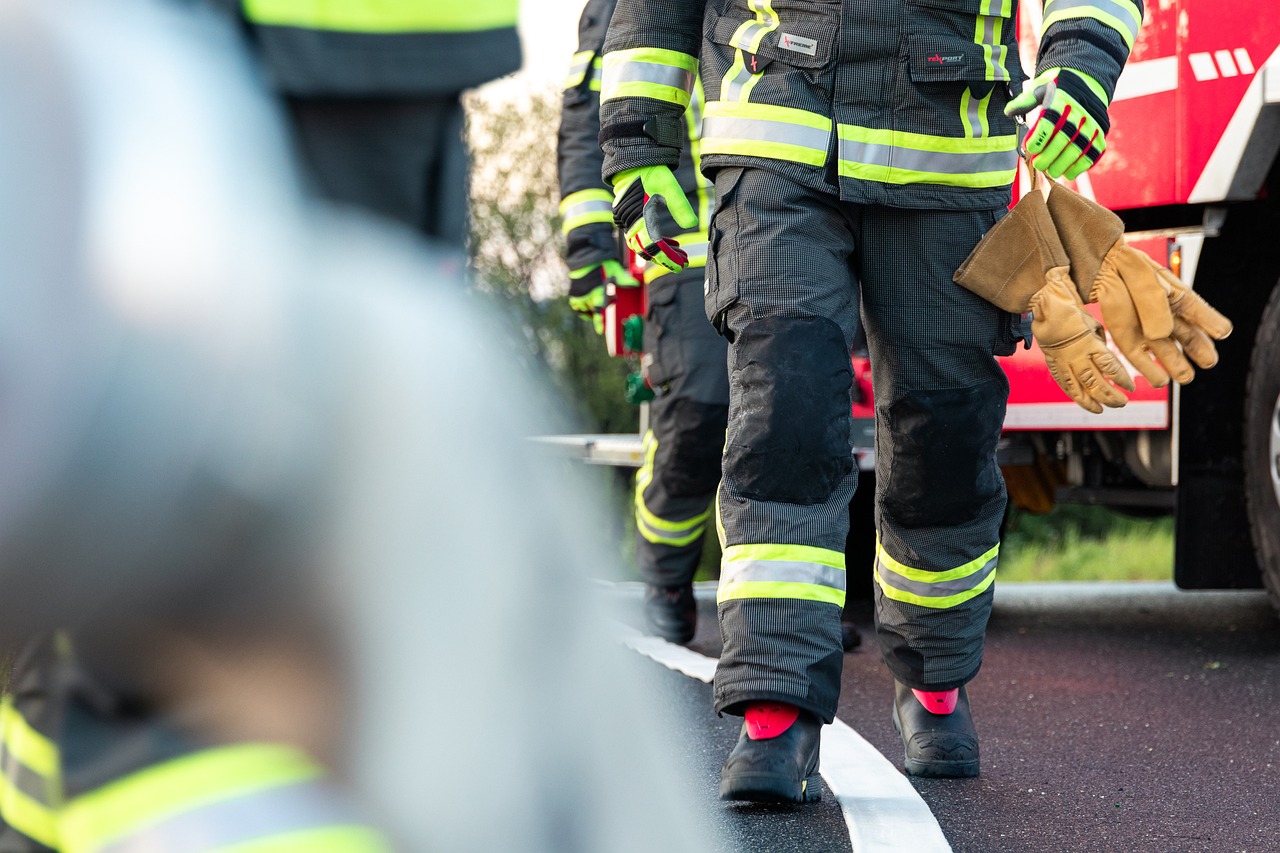
Practicing Your Emergency Plan
When it comes to emergencies, having a plan is just the first step; practicing that plan is where the real magic happens! Think of your emergency plan as a dance routine. You can know all the steps, but if you never practice, you’re likely to trip over your own feet when the music starts. Regularly practicing your emergency plan not only enhances your preparedness but also helps to reduce panic and confusion when an actual crisis hits. So, how do you get started?
First, gather your family or household members for a meeting. Discuss the emergency plan in detail, making sure everyone understands their roles and responsibilities. For instance, who will grab the emergency kit? Who is responsible for checking on pets? This discussion is crucial to ensure that everyone is on the same page. It’s like a team huddle before a big game—everyone needs to know the play!
Next, conduct drills. Just like fire drills in school, simulate different emergency scenarios. For example, practice what to do in case of a fire—where to exit, how to stay low to the ground, and where to meet outside. You might even want to set up a scenario for a natural disaster, such as an earthquake or a flood. This could involve moving to a designated safe area or practicing how to turn off utilities. By making these drills realistic, you help everyone understand the urgency and importance of the plan.
It’s also beneficial to incorporate technology into your practice sessions. Use apps or text alerts to simulate emergency notifications. This will help familiarize everyone with how to respond quickly when they receive alerts during a real emergency. Just like a superhero needs to know their gadgets, you need to be comfortable with your tools!
After each practice session, take time to review what went well and what could be improved. This reflection is essential. It’s like reviewing game footage; you can identify weaknesses and adjust your strategy. Encourage open communication and feedback from all participants. This will not only improve your plan but also foster a sense of teamwork and camaraderie.
Finally, schedule regular practice sessions—at least twice a year. Emergencies don’t follow a calendar, so being prepared year-round is vital. Remember, the more you practice, the more confident everyone will feel. It’s about building muscle memory, so when the time comes, you can react swiftly and efficiently.
- How often should I practice my emergency plan? It’s recommended to practice at least twice a year to keep everyone familiar with their roles and responsibilities.
- What types of scenarios should I practice? Consider practicing for various emergencies such as fires, earthquakes, floods, and medical emergencies to ensure comprehensive preparedness.
- Should I involve children in the practice sessions? Absolutely! Involving children helps them understand the importance of the plan and teaches them how to react in an emergency.
- What if someone in my household has special needs? Make sure to tailor your practice sessions to accommodate their needs, ensuring everyone knows how to assist them during an emergency.
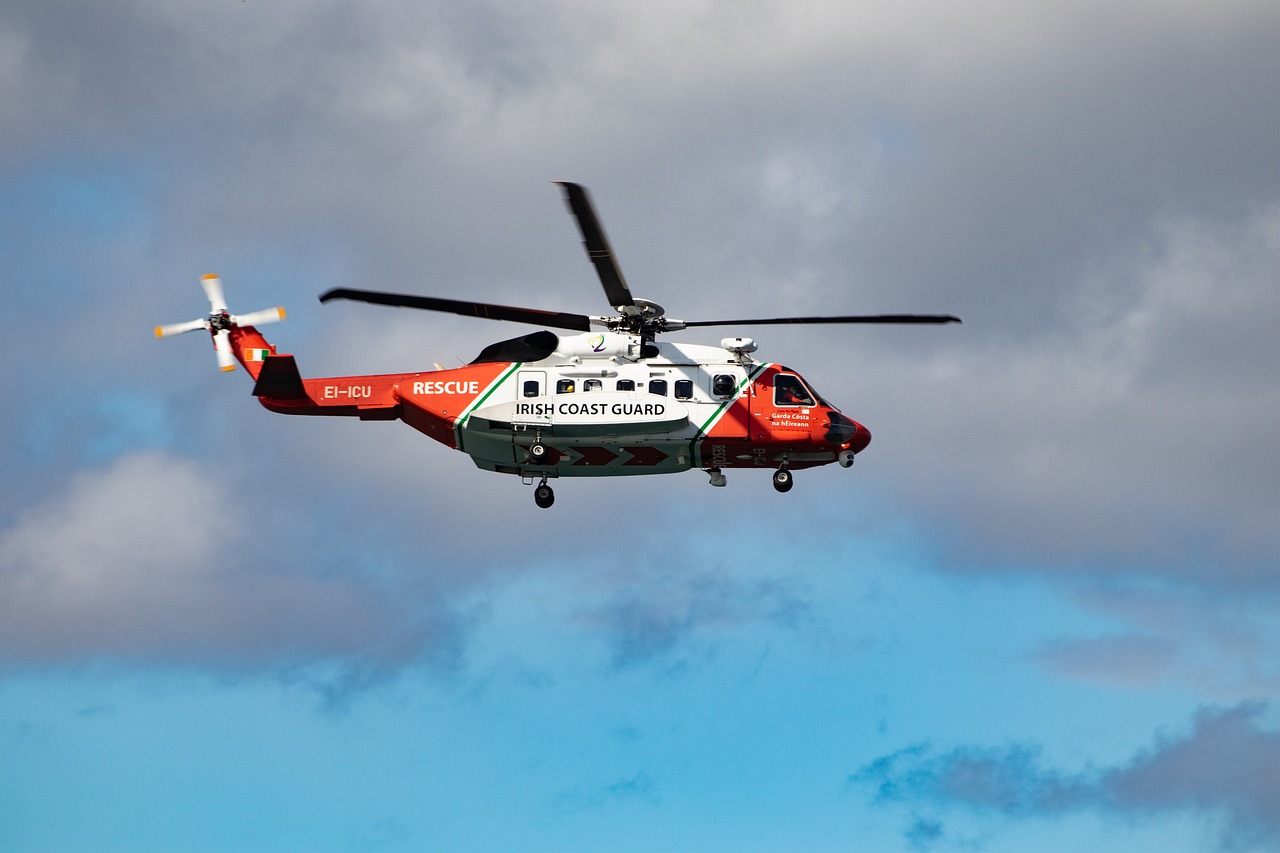
Reviewing and Updating Your Emergency Preparedness
When it comes to emergency preparedness, think of it as a living document. Just like you wouldn’t wear the same pair of shoes every day for years, your emergency plan and supplies need to be regularly reviewed and updated. As life changes—whether it’s a new job, a move to a different area, or the addition of a family member—so do your needs in a crisis. This is not just a one-time checklist; it’s an ongoing process that ensures you and your loved ones are always ready for whatever life throws your way.
Start by setting a regular schedule for reviewing your emergency plan—every six months is a good rule of thumb. During these reviews, gather your family together and discuss your current plan. Ask questions like, “Is our evacuation route still safe?” or “Do we have enough supplies for everyone, including our pets?” This is a great opportunity to involve everyone in the conversation and make sure that everyone knows their role in an emergency.
Next, check your emergency kit. Over time, items can expire or become unusable. Here’s a quick checklist of items to inspect:
- Food and Water: Ensure non-perishable food items are not expired and that you have enough water for at least three days.
- First Aid Supplies: Check that all medical supplies are stocked and not expired.
- Flashlights and Batteries: Test your flashlights to ensure they work and replace batteries as needed.
- Important Documents: Make sure that any important documents, such as insurance policies, are up to date and easily accessible.
Another aspect to consider is technology. In today’s digital age, staying informed is crucial. Regularly update your contact information for local emergency services and familiarize yourself with any new apps or technologies that can help you during a crisis. For instance, many communities now have emergency alert systems that can send notifications directly to your phone. Make sure you’re signed up for these services!
Lastly, don’t forget about the vulnerable members of your community. If you have elderly family members or friends, check in with them to ensure they have what they need in case of an emergency. This can be as simple as making sure they have a charged phone or that their medications are stocked. A little bit of outreach can make a huge difference in someone’s preparedness.
In conclusion, reviewing and updating your emergency preparedness plan isn’t just about ticking off boxes; it’s about ensuring peace of mind for you and your loved ones. By regularly assessing your plan and supplies, you can adapt to changes in your life and community, making sure you’re always ready to face whatever comes your way. Remember, the best time to prepare is before an emergency strikes!
Q: How often should I review my emergency plan?
A: It's recommended to review your emergency plan every six months to ensure it's up to date and relevant to your current situation.
Q: What should I include in my emergency kit?
A: Your emergency kit should include food, water, first aid supplies, flashlights, batteries, important documents, and any personal items necessary for your family.
Q: How can I stay informed during an emergency?
A: Stay informed by signing up for local emergency alerts, following local news outlets, and utilizing social media for real-time updates.
Q: What special considerations should I keep in mind for elderly family members?
A: Ensure they have access to necessary medications, a charged phone, and that they understand the emergency plan. Regular check-ins can help them feel supported.
Frequently Asked Questions
- What types of emergencies should I prepare for?
It's essential to consider a variety of emergencies when preparing. These can include natural disasters like hurricanes and earthquakes, medical emergencies such as heart attacks or injuries, and man-made crises like fires or terrorist attacks. Each type requires a different approach, so understanding the risks in your area is crucial.
- How do I create an effective emergency plan?
An effective emergency plan should include communication strategies, evacuation routes, and designated meeting places for family members. Make sure everyone knows the plan and practices it regularly. Consider having multiple ways to communicate, especially if cell service is down.
- What should I include in my emergency kit?
Your emergency kit should contain enough supplies to last at least 72 hours. Essential items include water, non-perishable food, a flashlight, batteries, a first aid kit, and any necessary medications. Don't forget personal hygiene items and important documents, too!
- How can I stay informed during an emergency?
Staying informed is key during emergencies. Utilize multiple sources like local news broadcasts, official social media channels, and emergency alert systems. Consider downloading emergency apps that provide real-time updates and alerts.
- Do I need to know first aid for emergencies?
Yes, knowing basic first aid can be a lifesaver. Familiarize yourself with essential skills like CPR, wound care, and how to manage common injuries. Include a well-stocked first aid kit in your emergency supplies to handle minor medical issues effectively.
- What special considerations should I take for vulnerable populations?
Vulnerable populations, such as the elderly or those with disabilities, may need additional support during emergencies. Ensure your emergency plan includes provisions for their specific needs, such as mobility aids or medications, and consider how to assist them in evacuations.
- How often should I practice my emergency plan?
It's a good idea to practice your emergency plan at least twice a year. Regular drills help everyone remember their roles and reduce panic during real emergencies. Make it a family activity to ensure everyone is on the same page.
- Why is it important to review and update my emergency preparedness?
Emergency preparedness is not a one-time task. Regularly reviewing and updating your plans and kits ensures they remain relevant and effective. Changes in family dynamics, new risks, or updated guidelines can all necessitate adjustments to your preparedness strategy.



















